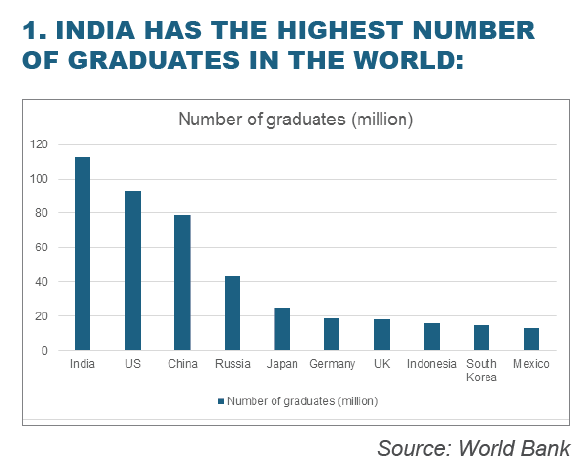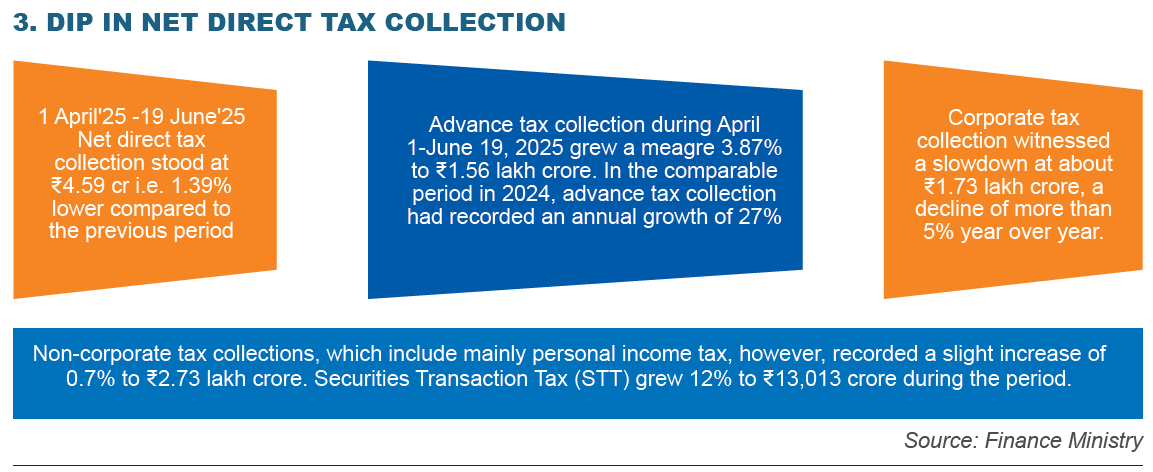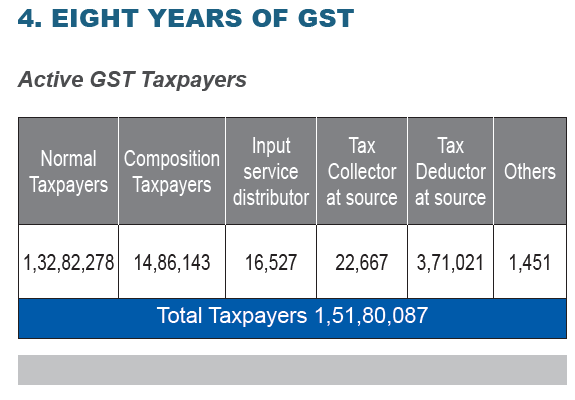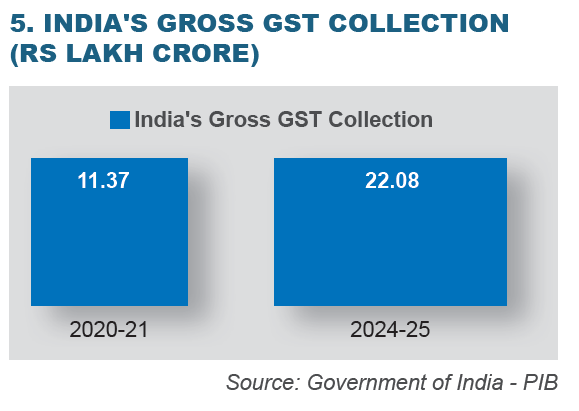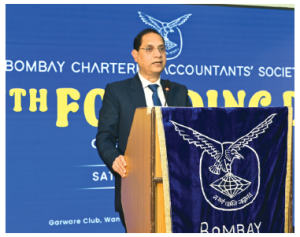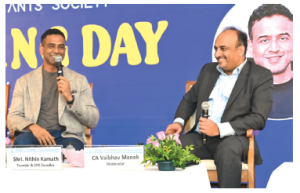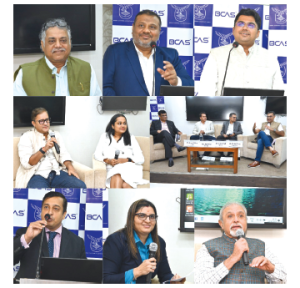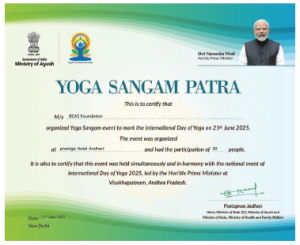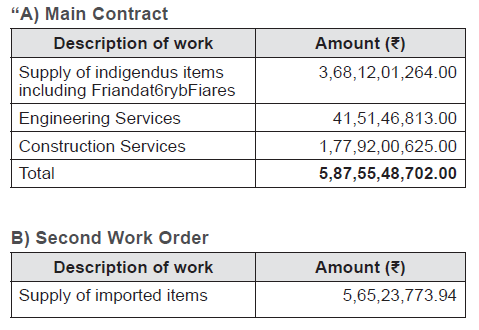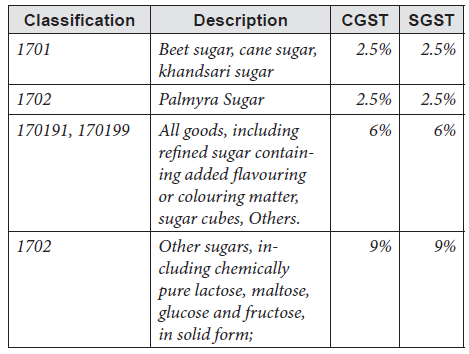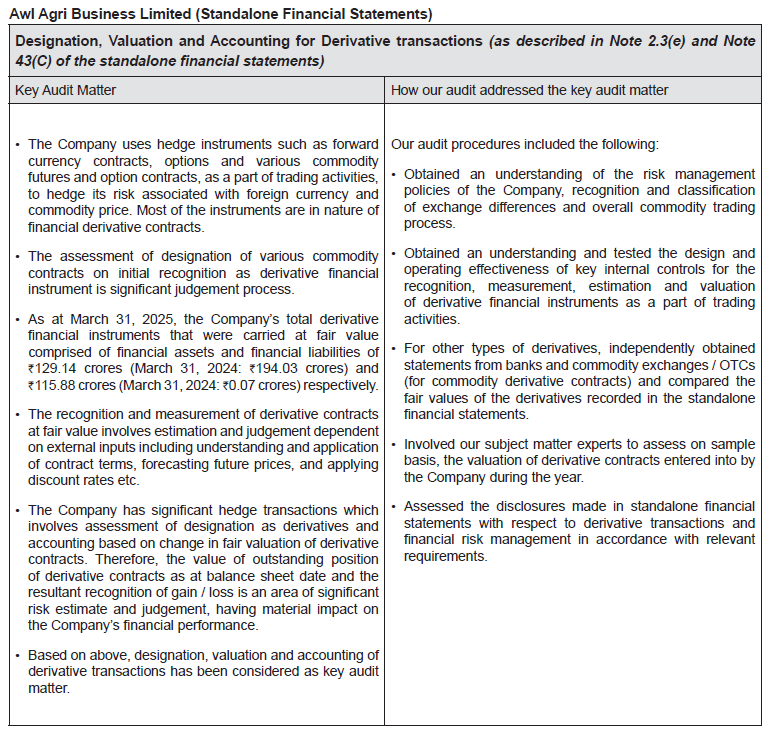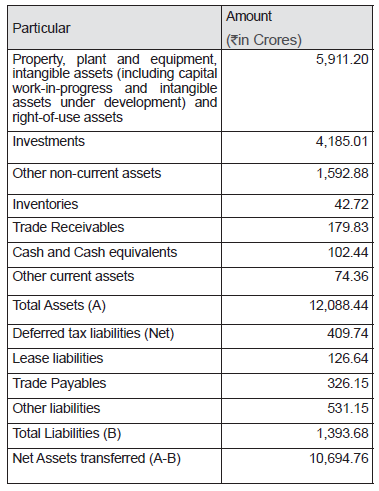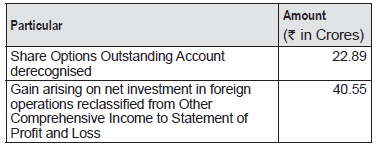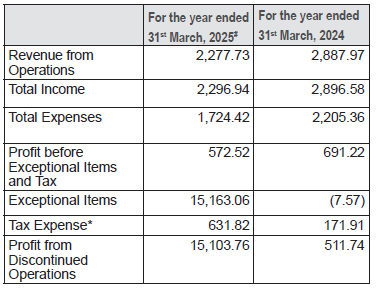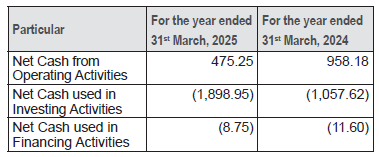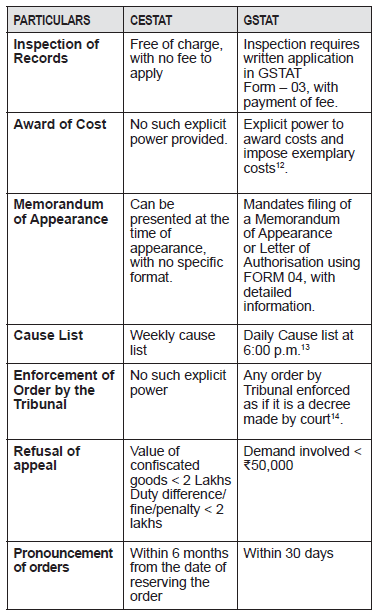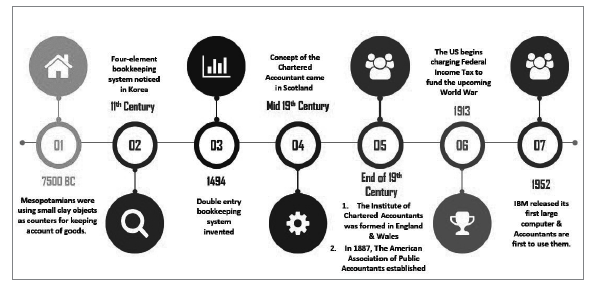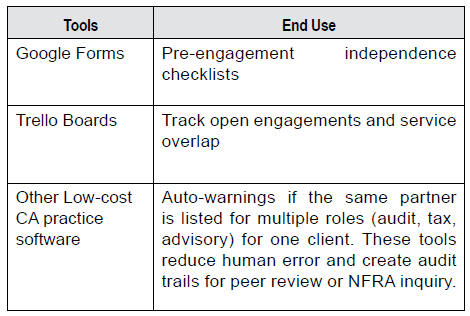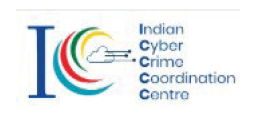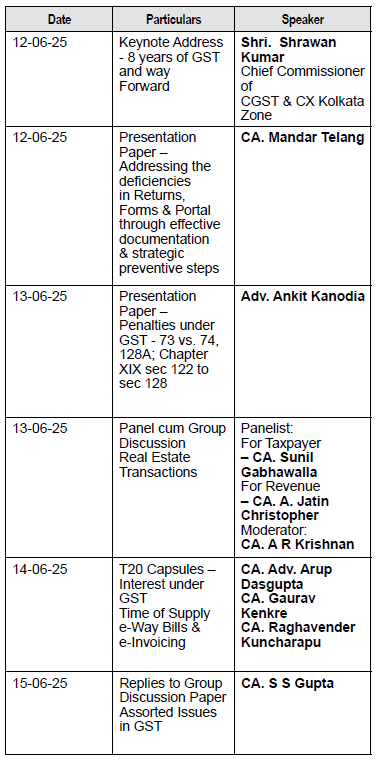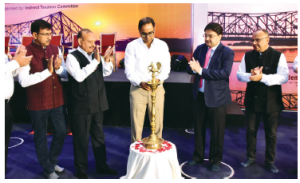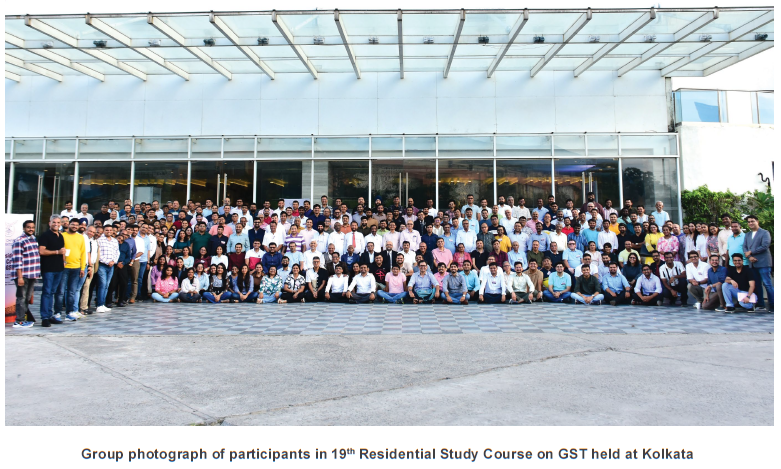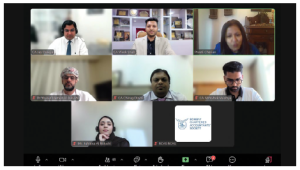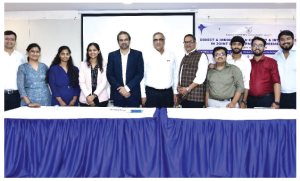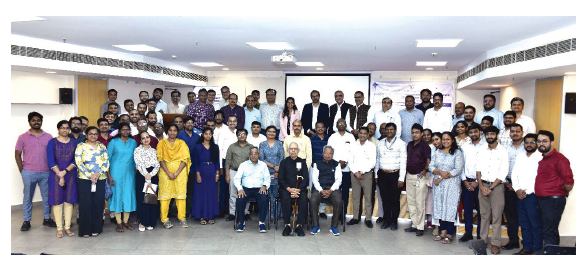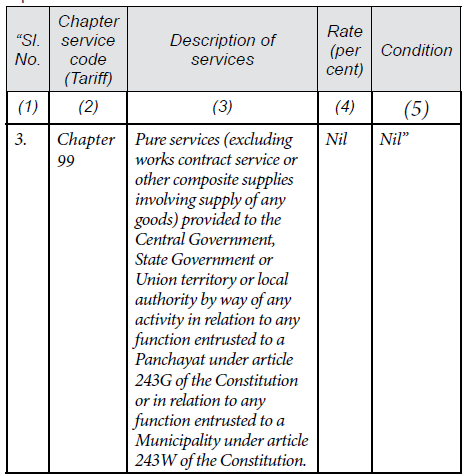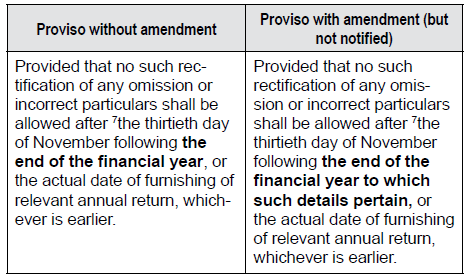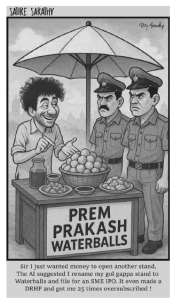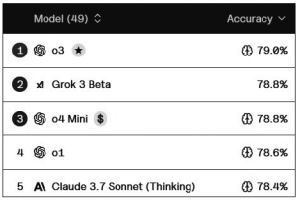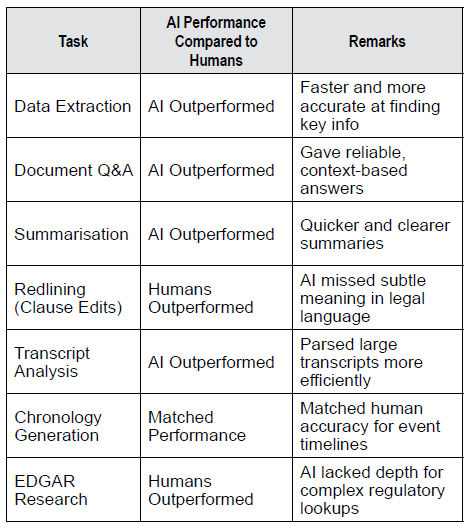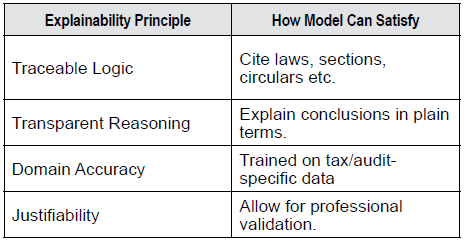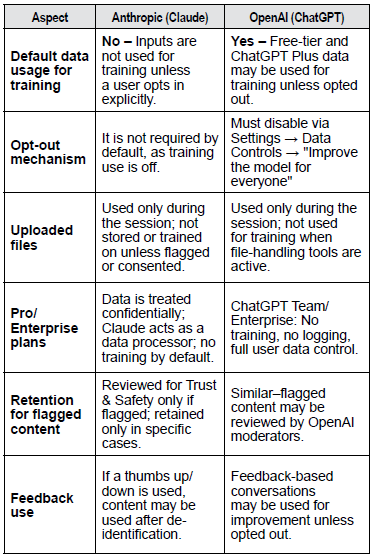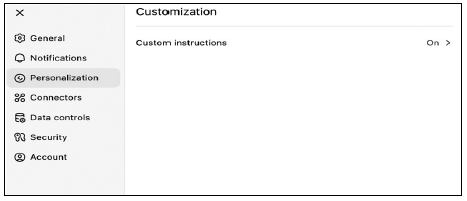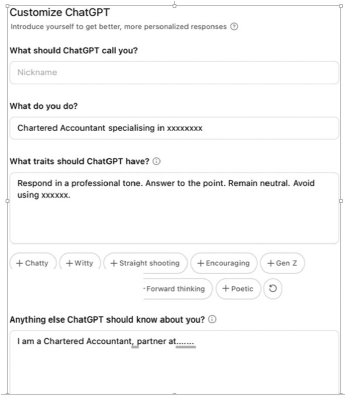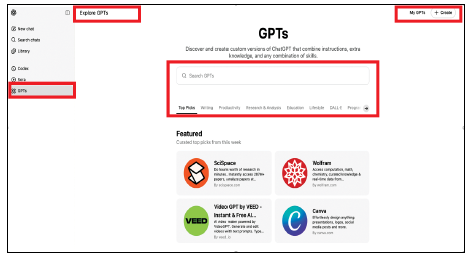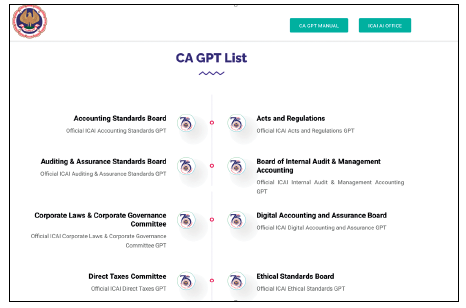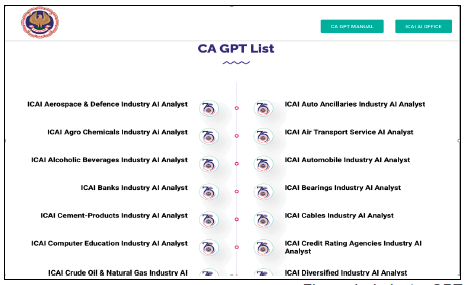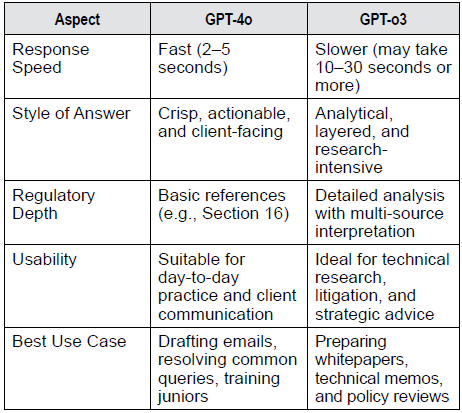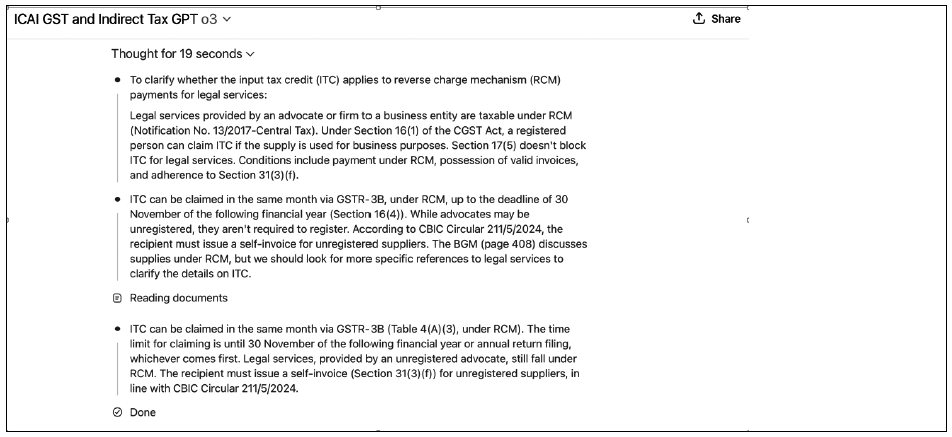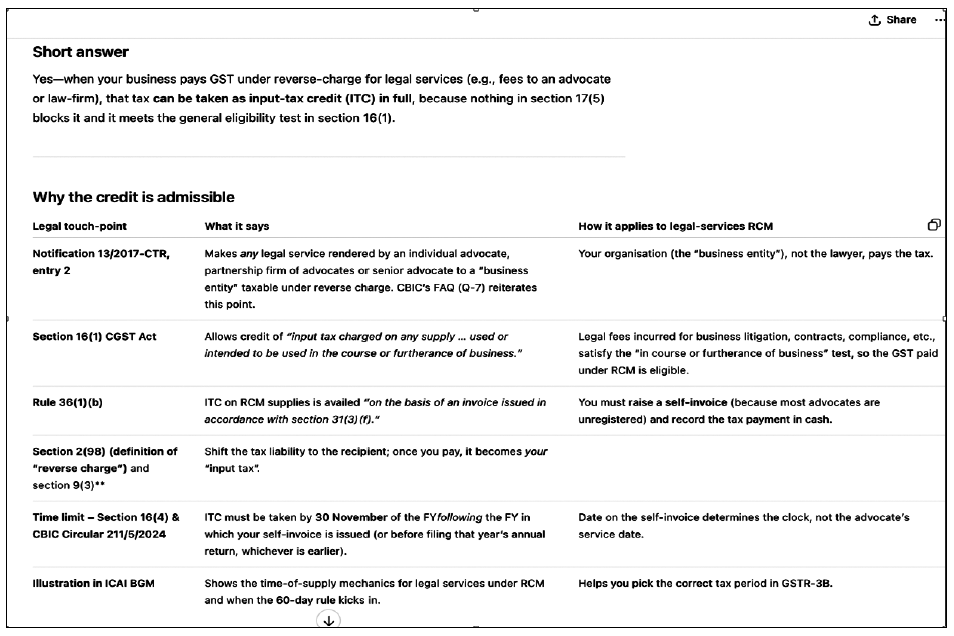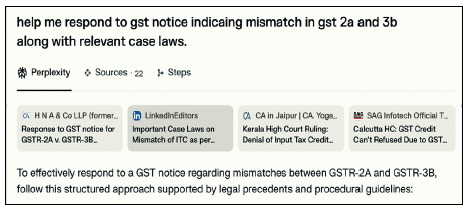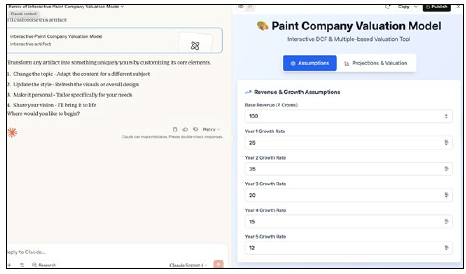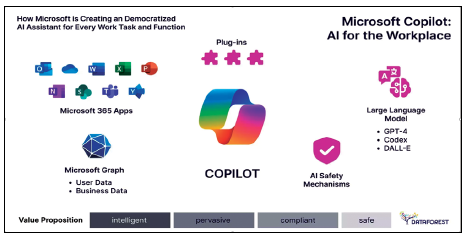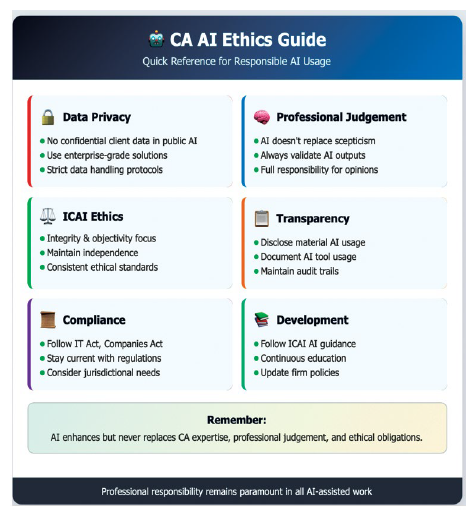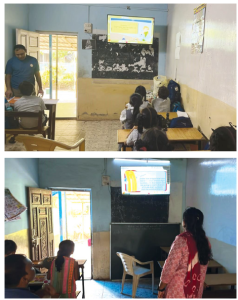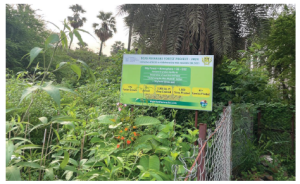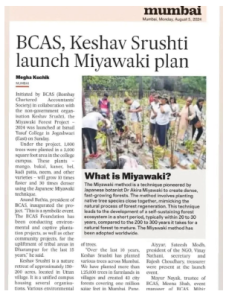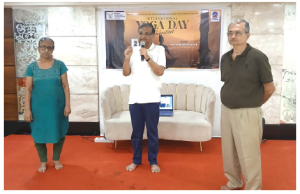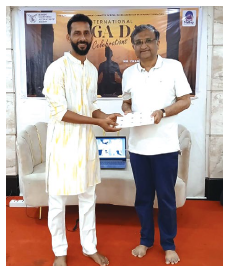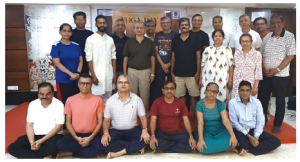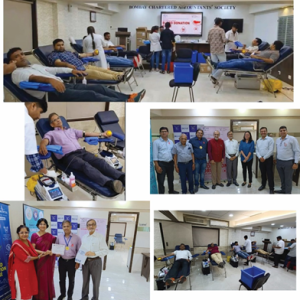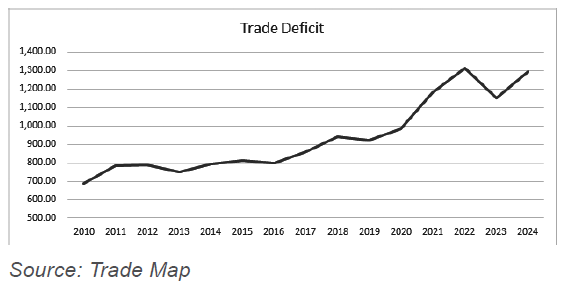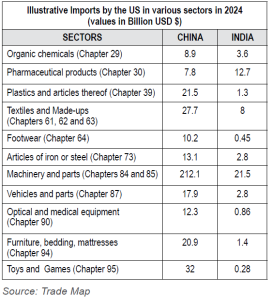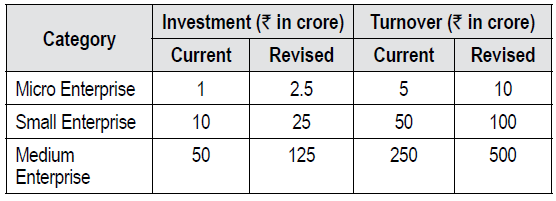ISSUE FOR CONSIDERATION
Section 90(1) of the Income-tax Act, 1961 (“IT Act”) provides that the Central Government may enter into an agreement with the government of any country outside India or any specified territory outside India for the granting of relief in respect of:
a) income on which taxes have been paid both in India and that country/territory,
b) income-tax chargeable under the IT Act and under the corresponding law in force in that country/territory, where the agreement is for:
i) the avoidance of double taxation of income under the IT Act and under the corresponding law in force in that country/territory, or
ii) exchange of information for the prevention of evasion or avoidance of income-tax, and for recovery of income-tax under the IT Act.
Section 90(2) of the IT Act provides that, an assessee can choose to apply the provisions of the DTAA or the IT Act, whichever is more beneficial.
Section 9 of the IT Act deems certain income to accrue or arise in India. Such income includes, inter alia, dividend, interest, royalties and fees for technical services (“FTS”) payable by a resident of India to a non-resident (clauses (iv), (v), (vi) and (vii)), subject to certain exceptions specified in those clauses.
In almost all the DTAAs that India has entered into with other countries, there are clauses pertaining to taxation of dividend, interest, royalties and FTS. Typically, these clauses provide that the dividend, interest, royalty or FTS paid by a resident of one State (country) to a resident of the other State would be taxable in the source country and also provide the maximum rate of tax to be paid in the source country. The Article of the DTAA that deals with the treatment of Interest usually reads as “interest paid by a resident of a contracting state to a resident of another contracting state”, with similar language employed in DTAA for dividend and royalties and FTS Articles.
A controversy has arisen before the courts and the tribunal about the true meaning of the term “paid” used in these articles of DTAAs i.e. whether such interest, royalties and FTS would be taxable as income of the non-residents only on actual payment to the non-residents, or whether the term ‘paid’ used in the DTAA covers such income even where the same is yet payable and therefore does not alter the point of taxation of such income. In other words, such income can be taxed once it is payable. Since such payments are governed by the requirement to deduct tax at source (“TDS”), a corollary issue has also come up whether the payer can be treated as an assessee-in-default for not deducting TDS at the time of credit, and whether the expenditure in respect of such interest, royalties and FTS can be disallowed in the hands of the payer under section 40(a)(i) for non-deduction of TDS.
While the Mumbai, Delhi, Chennai and Ahmedabad benches of the Tribunal have held that such amounts are taxable as income of the non-residents only on actual payment, the Bangalore bench of the Tribunal has held that such income of the non-resident can be taxed on accrual, i.e. even where it is payable and not paid. In the context of the issues of TDS and the allowance of expenditure, it has been held that in most cases that TDS is deductible only on actual payment, while the Bangalore Tribunal has held that TDS is deductible on credit.
JOHNSON & JOHNSON’S CASE
The issue came up before the Mumbai bench of the Tribunal in the case of Johnson & Johnson vs. ADIT 60 SOT 109.
In this case, the assessee was a tax resident of the USA deriving income from royalty, and claiming the benefit of the India-USA DTAA. It filed its return for AY 2004-05 offering income of ₹7,16,69,537 to tax and paid tax thereon at 15%. The assessment was completed u/s. 143(3) accepting the returned income and tax thereon at 15%.
A notice u/s 148 was issued proposing reassessment on the ground that its Indian subsidiaries had credited an amount of ₹52,07,53,780 to its account during the year ended 31st March 2004 as royalty, and the assessee had offered only ₹7,16,69,537 to tax. Therefore, according to the notice, an amount of ₹44,90,84,243 had escaped assessment. It was also proposed to levy tax at the rate of 20%, instead of 15% adopted in the assessment.
In its reply to the notice u/s 148, inter alia, the assessee (a US company) pointed out that it had consistently been following the cash method of accounting for more than 13 years, and that this had been accepted by the Commissioner (Appeals) in an appeal for an earlier year. The Indian subsidiaries followed the mercantile system of accounting as required by the Companies Act, 1956. The amount accrued had actually been paid to it in the years ending March 2006 and March 2007. Besides, the amount mentioned in the notices was incorrect, as only ₹38,48,76,032 had been credited to its account in the books of its subsidiaries during the year, as was evident from the Transfer Pricing report in Form 3CEB.
The AO brought to tax the entire amount of ₹52,07,53,780 on the ground that no documentary evidence had been filed, and that the TDS certificates had mentioned this amount which was the reason for the addition. The DRP rejected the objections of the company without considering the merits of the issues.
Before the Tribunal, on behalf of the assessee, the issues raised included the jurisdiction, the legality of bringing to tax the entire royalty income, provisions of DTAA, mistake in AO’s order in considering the entire amount as accrued ignoring assessee’s contention of amount not received during the year, not giving credit of tax deducted at source and levy of interest, etc. The assessee contended that it was offering income on receipt basis consistently over the last so many years, based on the DTAA between India and the USA.
On behalf of the revenue, reliance was placed on the order of the AO and the principles relied upon by the AO on legality of reopening and reason for taxing the income on accrued basis. It was also submitted that an anomalous situation might arise when an assessee did not offer income and the deductors would not deduct tax at source as the amount was not taxable, and provisions of the Act could become inoperable.
The Tribunal noted that the assessee had filed all the TDS certificates along with the return and claimed credit of TDS only to the extent attributable to income offered to tax. The Tribunal observed that the AO in the scrutiny assessment u/s 143(3) had stated that the issue of Royalty was referred to TPO and TPO u/s 92CA(3) had not made any adjustment to the Arms Length Price. AO also left a note regarding the tax levied as per DTAA.
Interestingly, by the time assessment u/s 143(3) was passed by the AO for AY 2004-05, the CIT(A) had already decided a similar issue in AY 2003-04. In that year, the assessee had shown royalty of ₹24,66,34,994, whereas the TPO had fixed royalty income at ₹26,53,07,141, because in the audit report in Form No.3CEB, the amount reported was ₹26,53,07,141. The CIT(A) accepted that the royalty was taxable as per the cash method of accounting consistently followed by the assessee.
The Tribunal therefore observed the following facts:
a. Assessee was following cash system of accounting
b. The TDS was deducted at the same rate upon crediting to the account of assessee by the deductors.
c. The Royalty income was being offered on receipt and TDS to that extent only was claimed.
d. There was no escapement of income as income, as and when received, was being offered by assessee in that year.
e. Assessee’s consistent practice was according to the provisions of law and accepted up to AY 2003-04, even before reopening of the assessment in the year before it.
In assessment proceedings, clarification had been sought from the assessee regarding the claim of TDS when income was being offered to tax on cash basis, which had been accepted by the AO.
The Tribunal noted the provisions of Article 12 of the India-USA DTAA, which provided as under:
“ARTICLE 12
Royalties and fees for included services – 1. Royalties and fees for included services arising in a Contracting State and paid to a resident of the other Contracting State may be taxed in that other State.
2. However, such royalties and fees for included services may also be taxed in the Contracting State in which they arise and according to the laws of that State, but if the beneficial owner of the royalties or fees for included services is a resident of the other Contracting State, the tax so charged shall not exceed …
The definition of Royalties, vide Article 12(3) was as under:
“3. The term “royalties” as used in this Article means:
(a) Payments of any kind received as a consideration for the use of or the right to use, any copyright of a literary, artistic, or scientific work, including cinematograph films or work on film, tape or other means of reproduction for use in connection with ratio or television broadcasting, any patent, trade mark, design or model, plan, secret formula or process, or for information concerning industrial, commercial or scientific experience, including gains derived from the alienation of any such right or property which are contingent on the productivity, use or disposition thereof; and
(b) Payments of any kind received as consideration for the use of or the right to use, any industrial, commercial or scientific equipment, other than payments derived by an enterprise described in paragraph 1 of Article 8 (Shipping and Air Transport) from activities described in paragraph 2(c) or 3 of Article 8″.
The Tribunal noted that, as could be seen from the above, the words used in Article 12(1) was “paid to a resident of the other contracting state”. The term royalties also meant “payment of any kind received”. Since the word used in the DTAA was ‘paid’ or ‘received’, the assessee’s contention that amounts could not be taxed on accrual basis was correct. As per the Tribunal, this interpretation was also supported by the decision of the Hon’ble Bombay High Court in the case of DIT (IT) vs. Siemens Aktiengesellschaft ITA no 124 of 2010 dt.22.10.12 wherein the Hon’ble Bombay High Court on a question as follows:
“Whether on the facts and in the circumstances of the case the Tribunal was right in law in holding that the Royalty and fees for technical services should be taxed on receipt basis without appreciating the fact that the Hon’ble Supreme Court has held in the case of Standard Triumph Motors Private Limited v. CIT 201 ITR 391 that the credit entry to the account of assessee non-resident in the books of the Indian company amounted to receipt by the non-resident?” had held as under:
“As regards first question is concerned, the Income Tax Appellate Tribunal referring to Para 1 to 3 under Article IIX-A of the Double Taxation Avoidance Treaty with the Federal Germany Republic as per Notification dated 26th August, 1985 held that the assessment of royalty or any fees for technical services should be made in the year in which the amounts are received and not otherwise. Counsel for the Revenue relied upon the Special Bench decision of the Tribunal in assessee’s own case, which in our opinion, has no relevance to the facts of the present case, as it relates to the period prior to the issuance of Notification dated 26th August, 1985. In this view of the matter the decision of the Income Tax Appellate Tribunal in holding that the royalty and fees for technical services should be taxed on receipt basis cannot be faulted”.
The Tribunal therefore observed that there was no dispute with reference to taxation of the royalties on receipt basis in so far as a recipient who was a resident of the other contracting state, like the assessee, was concerned, as per the DTAA. On this basis and other arguments, the Tribunal held the reassessment proceedings to be bad in law and annulled the order of reassessment.
A similar view has been taken by the Tribunal in the following cases:
- DCIT vs. Uhde Gmbh 54 TTJ 355 (Bom) – royalty & FTS under India-Germany DTAA
- DDIT vs. Siemens Aktiengesellschaft 2009 taxmann,com 1019 (Mum) – royalty & FTS under India-Germany DTAA
- Siemens Aktiengesellschaft vs. DDIT 175 taxmann.com 1012 (Mum) – royalty & FTS under India-Germany DTAA
- Gurgaon Investments Ltd vs. DDIT 182 ITD 424 (Mum) – interest under India-Mauritius DTAA
- Pramerica ASPF II Cyprus Holding Ltd vs. DCIT 157 ITD 1177 (Mum) – interest under India -Cyprus DTAA
- ABB Switzerland Ltd vs. DCIT 154 taxmann.com 132 (Bang) – Royalty & FTS under India-Switzerland DTAA
- Booz Allen & Hamilton (India) Ltd & Co Kg vs. ADIT 152 TTJ 497 (Mum) – FTS under India-USA DTAA
- CSC Technology Singapore Pte Ltd vs. ADIT 50 SOT 399 (Delhi) – royalty & FTS under India-Singapore DTAA
- Pizza Hut International LLC vs. DDIT 54 SOT 425 (Del) – royalty under India-USA DTAA
- DCIT vs. TMW ASPF i Cyprus Holding Company Ltd – interest under India-Cyprus DTAA
- National Organic Chemical Industries Ltd vs. DCIT 96 TTJ 765 (Mum) – FTS under India-Switzerland DTAA in the context of deduction of TDS u/s 195
- DCIT vs. Elitecore Technologies (P) Ltd 164 taxmann.com 571 (Ahd) – royalty under India-USA DTAA in the context of disallowance u/s 40(a)(i)
- DCIT vs. Inzi Control India Ltd 101 taxmann.com 112 (Chennai) – royalty and FTS under India-Korea DTAA in the context of disallowance u/s 40(a)(i)
- Saira Asia Interiors (P.) Ltd vs. ITO 164 ITD 687 (Ahd) – royalty under India-Italy DTAA in the context of deduction of TDS u/s 195
- Sophos Technologies (P.) Ltd vs. DCIT 100 taxmann.com 374 (Ahd) – royalty under India- Russia and India-Israel DTAAs in the context of disallowance u/s 40(a)(i)
GOOGLE INDIA (P) LTD’S CASE
The same issue had again come up before the Bangalore bench of the Tribunal in the case of Google India (P) Ltd vs. ACIT 190 TTJ 409.
In this case, the assessee was a wholly owned subsidiary of a US Co, Google International, LLC. The assessee was appointed as a non-exclusive authorized distributor of Adword programs to the advertisers in India by Google Ireland, and was granted the marketing and distribution rights of Adword program to the advertisers in India. The assessee credited a sum of ₹119 crore to the account of Google Ireland without deduction of tax at source.
Proceedings were initiated u/s.201, calling upon the appellant why it should not be treated as an assessee in default for not deducting tax at source on the sum payable to Google Ireland. The AO held that the amount payable to Google Ireland was royalty, and that TDS should have been deducted on the amount credited. The AO held that u/s 9(1)(vi) of the Act, royalty was charged on accrual basis and the actual receipt of the same by the recipient was immaterial for the purpose of deduction of taxes. The AO relied upon the following judgments:
Trishla Jain vs. ITO 310 ITR 274 (Punj. & Har.),
AegKtiengesselschaft vs. IAC 48 ITD 359 (Bang.),
Allied Chemical Corpn. vs. IAC 3 ITD 418 (Bom.)(SB), and
Dana Corporation USA vs. ITO 28 ITD 185 (Bom.)
Further, the AO took the support of s. 43(2) of the I.T. Act which defines ‘paid’ as:
“(2) ‘Paid” means actually paid or incurred according to the method of accounting upon the basis of which the profits or gains are computed under the head “Profits and gains of business or profession”;
Accordingly, the AO concluded that the meaning of the term “paid” includes amount incurred i.e. where it becomes payable.
On first appeal, the Commissioner(Appeals) decided the issues against the assessee and confirmed the withholding tax liability in the hands of the assessee, on the basis that the amount payable by the assessee to Google Ireland was in the nature of royalty under the provisions of the Act as well as under the India-Ireland DTAA. He did not adjudicate on the specific ground relating to the royalty being taxable only on payment.
Before the Tribunal, elaborate arguments were advanced on behalf of both the assessee as well as the revenue on the aspect of whether the amounts payable to Google Ireland were in the nature of royalty, and on the period of limitation u/s 201.
On behalf of the assessee, it was argued that assuming the amount payable to Google Ireland was in the nature of ‘royalty’, then in terms of Article 12 of the India-Ireland DTAA, income in the nature of royalty was chargeable to tax in the hands of the non-resident only on receipt basis. Attention was drawn to Article 12 of the India-Ireland DTAA, which read as under:
1. Royalties or fees for technical services arising in a Contracting State and paid to a resident of the other Contracting State may be taxed in that other State.
2. However, such royalties or fees for technical services may also be taxed in the Contracting State in which they arise, and according to the laws of that State.
3. (a) The term “royalties” as used in this Article means payments of any kind received as a consideration for the use of or the right to use, any copyright of literary, artistic or scientific work including cinematograph films or films or tapes for radio or television broadcasting any patent, trademark, design or model plan, secret formula or process or for the use of or the right to use industrial, commercial or scientific equipment, other than an aircraft or for information concerning industrial, commercial or scientific experience.
Accordingly, it was submitted that so far as taxability of Royalty was concerned, twin conditions of “arising in India” as also the “payment” are to be satisfied. Reliance was placed on the Mumbai Tribunal decision in the case of National Organic Chemical Industries Ltd (supra). Further, it was also submitted that the term ‘royalty’ in Article 12(3)(a) of the India-Ireland DTAA is defined to mean payment of any kind received as a consideration for the use or right to use copyright, patent, trademark, etc. A plain reading of the above phrase means that an amount can be characterized as royalty under the DTAA only on payment and not merely on accrual. In other words, until the amount is paid, the amount accrued or due cannot partake the character of royalty.
It was argued that even if one were to state that the point of taxation is the “arising” of the income in India, the same can be finally taxed only on the basis of the amount “paid” to the non-resident. Reliance was placed upon the Delhi Tribunal decision in the case of Pizza Hut International LLC (supra). Hence, it was submitted that mere “accrual” without “payment” would not crystallise the charge under the DTAA, irrespective of the position under the Act and accordingly Royalty should not be taxable in India.
The decision of the Supreme Court in the case of Standard Triumph Motors Co Ltd (supra) was sought to be distinguished on the ground that the decision did not take into account the provisions of the DTAA as probably none existed at that time, and that the decision of the Delhi ITAT in the case of Pizza Hut International LLC (supra) factored in the observations of the Supreme Court in the case of Standard Triumph Motors, while holding that the royalty can be considered as taxable in the hands of the recipient on a receipt basis.
Reliance was also placed on the Bombay High Court ruling in the case of Siemens Aktiengesellschaft [IT Appeal No. 124 (Bom.) of 2010, dated 22-10-2012], and the Tribunal rulings in the cases of Booz. Allen & Hamilton (India) Ltd. & Co. (supra), Johnson & Johnson (supra) and CSC Technology Singapore Pte Ltd. (supra).
It was also submitted on behalf of the assessee that the liability to withhold taxes in the hands of the payer was on payment basis and not on accrual basis. For the purpose of determining whether an amount is chargeable to tax in the hands of a non-resident, the provisions of the relevant DTAA would also need to be factored in. It was submitted that the charge under the DTAA on royalty was triggered only when the amount was paid and not when the amount was accrued or even due. Accordingly, royalty receivable by Google Ireland would be chargeable to tax under the India – Ireland DTAA only when actually received and accordingly, the liability to withhold under section 195 would arise only when the sum became chargeable in the hands of Google Ireland i.e. when the amount was paid. Reliance was placed on the Tribunal decision in the case of Saira Asia Interiors (P.) Ltd (supra).
Therefore, it was submitted that withholding liability in the hands of the assessee would arise only on payments made and not on the amounts payable to Google Ireland. Therefore, as section 195 of the Act cast an obligation on the payer to withhold tax only when the same was chargeable to tax in India, withholding of tax, if any, would be required only at the time of actual remittance and not on the credit in the books of accounts. Hence, there was no requirement for withholding of tax in the relevant years as the amounts remained unpaid during the years under consideration.
On behalf of the revenue, it was argued that when the withholding tax liability in the subject year was determined on payment basis under the DTAA, the assessee may claim in the year of receipt that the taxability in the hands of the payee would arise on accrual basis and accordingly, liability to withhold would be the year of accrual. It was argued that the provisions of section 195 has to be read along with charging provisions i.e. sections 4, 5,9 and 90 of the Act. On conjoint reading of the above provisions, it was clear that the amounts paid by the assessee to Google Ireland were chargeable under the Act on accrual basis.
If the language of the definition of royalty under the DTAA was read, the words “payments of any kind received as a consideration for the use of’ had to be read together, and it would only mean the classification of the income and not the method of accounting. The assessee would be receiving amounts from IT services and IT enabled services from Google Ireland, and would pay Google Ireland for marketing and distribution services for Adword program. The assessee was a wholly-owned subsidiary of Google. In view of the close connection between Google India and Google Ireland, the payments to be received by the assessee provides IT services and IT enabled services could be adjusted towards payment towards marketing
and distribution services for Adword program. The fact that the assessee had not reflected the amounts paid to Google Ireland in the P&L account would further justify the above aspect. The words “payment of any kind received” had to be read as any mode of payment either by book adjustment/credit or actual payment.
It was further submitted on behalf of the revenue that the DTAA did not determine the method of accounting and the year of taxability in respect of parties to the agreement. What DTAA provided for was the extent of taxability of income and the percentage of the tax on the income liable for tax and the distribution of tax among the countries party to the DTAA. Hence, the language employed in defining the meaning of royalty could not be read to mean the method of accounting. The DTAA did not deal with the year of taxability or the method of accounting of either of the parties.
The only section which imposed obligation on the assessee was s. 195(1). The section obligated the assessee to deduct tax at source in respect of the income chargeable under the Act. The section did not empower the payer to examine the applicability of the DTAA to the payee. The language of section 90(2) was clear and unambiguous that the option to exercise the benefit of either the Act or the DTAA was conferred on the non-resident. Hence, at the stage of payment, without there being any indication by the recipient, the payer could not step into the shoes of recipient to exercise the option provided u/s 90(2) and claim the benefit of the DTAA. The application of DTAA was not automatic and it was only on the specific exercise of option by the recipient subject to fulfillment of certain conditions as contemplated under the DTAA. In the absence of any material or enquiry by the assessee, the assessee could not jump to the conclusion that the amount was not chargeable under the DTAA. What is to be considered at the time of payment by the assessee was only regarding the chargeability under the Act and the assessee could not be permitted to take shelter under the DTAA, as the benefit of DTAA was conferred only on the non-resident recipient.
It was further submitted on behalf of the revenue that the argument that receipt in the hands of Google Ireland was liable to be taxed on cash basis was completely baseless, for the reason that Google Ireland itself had admitted the Mercantile system of accounting being followed in its income tax returns of earlier years. If the assessee’s case was accepted that liability to deduct tax at source would arise in the year of payment as the same was taxable on receipt basis in the hands of the non-resident, in the event of the non-resident exercising the option u/s 90(2) to claim benefit of the provisions of the Act, and specifically in view of the Mercantile system of accounting being followed by the non-resident, if the non-resident claimed that the same was taxable on accrual basis u/s 4, 5 and 9, read with the specific language of section 195(1), the contention was clearly illogical and contrary to the scheme of the Act.
The Tribunal noted from the Services Agreement that payment was required to be made within 90 days after receipt of the invoice. It was abundantly clear that the distribution fees (Royalty) was payable during the year and up to final trued-up on the basis of the duly audited accounts of the assessee. There was no doubt that the payment was due and payable by the assessee to Google Ireland within the year it became due.
According to the Tribunal, the argument that the payment made by the assessee to Google Ireland was not a sum chargeable under the provisions of the Act, was not available for the payer to be raised. The necessary safeguards were provided by the Act in the form of Section 195(2), which clearly provided that in case the assessee was having any doubt about the chargeability to tax of the payment, then the assessee may make an application to the AO for the purpose of determining whether the sum was chargeable to tax or not and if yes, on what proportion. No such application was made u/s.195(2) to the AO. The assessee on its own, without having knowledge, information and privy to the accounting standard and accounting practice of Google Ireland, had treated the payment as a business profit of Google Ireland in its books of account. A uniform policy was required to be adopted for deduction of TDS by the person responsible for paying an amount to a non-resident. There was no caveat or condition laid by the Act on the person responsible for paying to non-resident. In the view of the Tribunal, whether it was business profit or royalty, in both the circumstances, so far as the assessee was concerned, the assessee was duty-bound to deduct the TDS unless there was an adjudication by the AO to the contrary u/s.195(2).
According to the Tribunal, the assessee’s argument that, under the provisions of India -Ireland DTAA, the royalty was chargeable to tax in the hands of the non-resident on receipt basis was to be rejected, as the benefit of DTAA, was only available to the non-resident and not to the resident payer. Moreover, the assessee could not claim that the royalty was chargeable to tax in the hands of the non-resident on receipt basis, as the assessee had no access to the accounting method followed by Google Ireland. Since Google Ireland was following the mercantile method of accounting and not the cash method of accounting, it should have shown the distribution fees (royalty) on accrual basis and not on receipt basis. Therefore, according to the Tribunal, the argument of chargeability of royalty in the hands of Google Ireland on receipt basis was required to be rejected.
The Tribunal also observed that the scope and ambit of DTAA as per section 90 was to grant relief from double taxation, to promote mutual economic relations, trade and investment, for exchange of information for prevention of evasion or avoidance of income-tax chargeable under this Act or in other country, or for recovery of income-tax under this Act or under corresponding laws. According to the Tribunal, the DTAA could only provide the characterisation of the income, the country where it was to be paid and at what rate the said income was to be taxed. However, in the Tribunal’s view, it was not within the scope of the DTAA to provide when (i.e. year of accrual or receipt) the income was required to be charged.
The Tribunal observed that the literal rule of interpretation was not required to be followed and instead thereof linga or lakshana principle had to be followed, i.e., the intent had to be seen and not the literal rule as pointed out by Lord Denning in his book, ‘The Discipline of Law”. If it went by the literal meaning of the DTAA, then unscrupulous persons may misuse the provision and avoid payment of taxes. To illustrate this, if A company is rendering services to B company, and B company is supplying some technology to A company, then there is a mutual obligation of paying and receiving the amount. It is possible for both A and B either to keep separate accounts for both transactions or they can indulge into adjustment of their accounts by debiting and crediting their accounts without actual payment. In such a situation, there will not be any occasion for B company to receive the actual payment from A company.
The Tribunal further observed that the income arising on account of royalty payable by resident or non-resident in respect of any right, property or information used or services utilized for the purposes of business or profession shall become due and payable as per the provisions of the IT Act, as well as under DTAA when such information is used or service is utilised by the recipient. In the case before it, the distribution fees was credited as accrued by the assessee after utilizing the benefit under the distribution agreement to the account of Google Ireland. Therefore, the same was chargeable to tax when it was credited to the account of Google Ireland and the appellant was duty-bound to deduct TDS at the time of crediting it to the account of Google Ireland. The assessee would not suffer any loss on this account if the payment was made to Google Ireland after deducting the tax. In any case if Google Ireland proved that the amount was not required to be taxed in India, then Google Ireland could claim refund in the assessment proceedings.
The Tribunal also noted that as per the mandate of Article 12(2) of the DTAA, the royalty was to be taxed in the contracting state (India) in accordance with the laws of India. The laws of India provided taxability of royalty on the basis of the accrual (mercantile method) and not on receipt (cash basis). Therefore, once clause 2 of Article 12 applied, the royalty paid by the assessee to Google Ireland was taxable as per Indian law.
The Tribunal was of the view that reliance placed by the assessee on the Delhi Tribunal decision in the case of Pizza Hut International LLC (supra) was misplaced, as, for arriving at the conclusion that the royalty is taxable on cash basis, the Delhi Bench had neither gone into the method of accounting, nor considered Article 12(2) of DTAA which provides that the royalty is taxable in accordance with the laws of India (contracting state/source country).
The Tribunal further noted the fact that the distribution fee payable to Google Ireland from December 2006 to June 2009 remained unpaid till November 2011, when an application for the remittance was made to the Reserve Bank of India, and was actually remitted only in May 2014 after receipt of the approval. According to the Tribunal, the intention of the assessee as well as of Google Ireland was clear and conspicuous that they wanted to avoid the payment of taxes in India. That is why, despite the duty of the assessee to deduct the tax at the time of payment to Google Ireland, no tax was deducted nor any permission was sought for paying the amount. If the permission for paying the amount was taken immediately after entering into the agreement, then this argument of not making the payment as late as May 2014 would not have been available to the assessee. The Tribunal was of the view that this was a clear design to skip the liability by both the assessee as well as Google Ireland through mutual understanding.
According to the Tribunal, in the case on hand, the conduct of the two parties, which were associated enterprises (AEs), clearly showed that both were trying to misuse the provision of DTAA by structuring the transaction with the intention to avoid payment of taxes, which was not permissible in law. The proviso was being abused by them as a device to defer the tax for any length of time by mutual understanding of the parties, particularly when both the parties were under an obligation to pay and receive the payment for the services rendered and for distribution fees (royalty).
The Tribunal also held that the Ahmedabad Tribunal decision in the case of Saira Asia Interiors (supra) was not applicable on the facts of the case before it, on the following grounds:
- There was no mechanism available with the revenue to know whether the actual amount was paid or credited in the hand of Google Ireland or not in the Assessment years under consideration or not, or even before the lapse of time limit to deduct and deposit the tax;
- The assessee had not sought permission for remittance till November 2011, though the agreement was entered into on 12 December 2005;
- This was a case of collusion between the payer and payee;
- When Google Ireland itself was following the mercantile method of accounting, then there was no occasion to adopt the cash method of accounting and conclude that the Royalty would trigger only on actual payment of the amount; and
- The royalty paid to Google Ireland was taxable as per the IT Act, which provided for maintaining the accounts as per mercantile method as per section 145.
Lastly, the Tribunal relied upon the decision of the Bangalore bench of the Tribunal in the case of Vodafone South Ltd vs. Dy DIT (IT) 53 taxmann.com 441, where the Tribunal had held that the rights as available to the payee to defend itself in an income tax assessment proceeding are not available to the assessee as payer in equal force, and that provisions of DTAA would not automatically attract in the defense of the payer.
The Tribunal, while holding that the payments to Google Ireland constituted royalty, also held that TDS u/s 195 ought to have been deducted on accrual of the royalty.
While this order of the Tribunal has been subsequently set aside and remanded by the Karnataka High Court by its order reported as 435 ITR 284 (Kar), this was on the ground that the Tribunal had relied upon the material which was never given to the assessee in deciding that the payment constituted royalty. In subsequent decisions of the Tribunal, the amounts paid to Google Ireland have been held to be not taxable in India.
However, in a decision of the Mumbai bench of the Tribunal in the case of Ampacet Cyprus Ltd vs. Dy CIT 184 ITD 743, the Mumbai bench of the Tribunal has expressed its doubt on the interpretation of the term “paid” used in DTAAs, and as to why the definition of “paid” in section 43(2) of the IT Act should not apply. The matter was accordingly referred to a Special Bench. However, before the Special Bench heard the matter, the assessee opted to settle the dispute under the Vivad se Vishwas Scheme 2024, and the appeals were accordingly dismissed as withdrawn.
In another case, in L S Automotive India (P) Ltd vs. ACIT 162 taxmann.com 600, the Chennai Bench of the Tribunal considered the issue of disallowance u/s 40(a)(i) of interest paid to a Korean company, the Tribunal observed that since, the DTAA was silent on taxability of interest income i.e., whether on accrual basis or receipt basis, it was viewed that as per provisions of s.195, the payee was responsible for deducting tax at the time of credit or payment, whichever is earlier. However, Since the case law relied upon by the assessee was applicability of DTAA between India and Cyprus and also on payment of royalty and fee for technical services, according to the Tribunal, this issue once again needed to be examined by the AO, in light of the decision of Bombay High Court and also DTAA between India and Korea.
OBSERVATIONS
While technically the decision of the Bangalore bench of the Tribunal in Google India no longer holds good as it has been set aside by the High Court for consideration of the material that was not made available to the assessee company, the decision subject to the said infirmity would require serious consideration, as the cases that do not suffer from such infirmity may be guided by the findings on law on the subject under consideration. Also required to be examined is the correctness of the other Tribunal decisions delivered in favour of the assessees, in view of the fact that such correctness has been doubted by the Mumbai bench in Ampacet Cyprus’s case(supra) where the Tribunal observed:
“In all the coordinate bench decisions, there is no discussion whatsoever to the connotations of the expression ‘paid’ and these decisions simply proceed on the basis that because the expression ‘paid’ is used article 11(1) of Indo Cyprus tax treaty, the taxability of interest can only be on cash basis. The expression “paid” is admittedly not defined in the treaty but article 3(2) of Indo Cyprus tax treaty provides that “As regards the application of the Agreement at any time by a Contracting State any term not defined therein shall, unless the context otherwise requires, have the meaning that it has at that time under the law of that State for the purposes of the taxes to which the Agreement applies and any meaning under the applicable tax laws of that State prevailing over a meaning given to the term under other laws of that State” What essentially follows is that unless the context otherwise requires, the definition of the undefined treaty term, under the domestic law of the source country i.e. India- and preferably under the domestic tax laws, is to be adopted. It is in this context, Section 43(2) of the Income-tax Act, 1961 may perhaps be relevant because it provides that “‘paid’ means actually paid or incurred according to the method of accounting upon the basis of which the profits or gains are computed under the head “Profits and gains of business or profession”. While it is indeed true that this meaning cannot be imported in the tax treaty mechanically, without any application of mind and as a sort of automated process, undoubtedly a call is to be taken by the bench as to whether or not this domestic law meaning of the expression ‘paid’ will be relevant. There could possibly be a school of thought that a decision rendered in this context, without specifically dealing with the implications of section 43(2) read with article 3(2), could possibly be per incuriam. A conscious call is required to be taken on these aspects. While on this issue, we may further add that one will have to see whether Hon’ble Supreme Court’s judgment in the case of Standard Triumph Motor Co. Ltd v CIT 201 ITR 391 which, inter alia, observes that “it must be held in this case that the credit entry to the account of the assessee in the books of the Indian company does amount to its receipt by the assessee and is accordingly taxable and that it is immaterial when did it actually receive it in UK”, will have any bearing on the connotations of expressions “paid” appearing in the Indo Cyprus tax treaty. As a corollary to these discussions, connotations of the expression “paid” appearing in article 11 of Indo Cyprus tax treaty are required to be examined in some detail, and that exercise can at best be conducted by a bench of three or more members so that the decision is unfettered by the decisions of the division benches in this regard.”
Further, in Ampacet Cyprus’s case(supra), while referring to the decision of the Bombay High Court in Siemens Akitengesellschaft (supra), which had held that the royalty and FTS should be treated on receipt basis, the Tribunal noted that this decision pertained to the old India-Federal Republic of Germany DTAA, which came to an end on 1 April 1997, from which date the hybrid method of accounting also came to an end. The Tribunal further observed:
“Considering that essentially business concerns prepare their accounts on the basis of mercantile method of accounting in general, even accounting of any income, such as interest and royalties, on cash basis was no longer permissible. To suggest, therefore, that interest or royalty income could be taxed in the hands of the foreign company on cash basis on the first principles is no longer permissible, and, as for the connotations of the expressions “paid” in the light of article 2(2), as it was numbered in the old Indo German tax treaty, read with section 43(2), this issue never came up for consideration at any stage at all. As article 2(2) was not even discussed, the relevance of section 43(2) or of Hon’ble Supreme Court’s decision in the case of Standard Triumph Motor Co. Ltd (supra) did not come up for Their Lordships’ kind consideration at all. It is also important to note that so far as article 3(2) of the Indo Cyprus treaty is concerned, it uses the expression “the meaning that it (i.e. the undefined treaty term) has at that time under the law of that State (i.e. under the Indian law)”. It is also worth examining whether, in this context, the scope of ‘Indian law’ will include not only the law legislated by the Parliament but also the law laid down by Hon’ble Courts above. A view is thus indeed worth exploring as to whether the meaning assigned to the expression “received by an assessee”, which essentially corresponds to and has to treated as equivalent to “paid to the payee”, by Hon’ble Supreme Court is to be assigned to the treaty of the undefined treaty expression “paid”. Obviously, this exercise was not done by the coordinate bench, nor this aspect of the matter was pointed out by the learned counsel appearing before Their Lordships, and thus Their Lordships had no occasion to examine this aspect of the matter either. To this extent, the impact of judgment of Hon’ble Supreme Court’s judgment in the case of Standard Triumph Motor Co. Ltd (supra) remained unexamined. That aspect of the matter is thus, de hors the judgment of Hon’ble jurisdictional High Court, does seem to be in an unchartered territory on which call may indeed be taken by the Tribunal.”
The analysis and the concerns and conclusions of the Tribunal in the cases of Cyprus Ampacet and Google India require greater consideration than the one given so far. Firstly, the purpose of a DTAA is to avoid double taxation, and to achieve that it provides for the taxing rights of the respective countries. In doing so, in addition the DTAA provides for the rates of tax and for grant of credit of taxes where an income is doubly taxed.
Secondly, s.43(2) has defined the term ‘paid’ to include the amount ‘payable’. A question arises whether the meaning provided in s.43(2) should be applied in interpretation of the DTAA while applying the provisions of the IT Act. The applicability of the definition of the term “paid” in s.43(2) of the IT Act to mean “actually paid or incurred according to the method of accounting” is a challenge that requires greater consideration.
Thirdly, the Supreme Court in settling the controversy relating to the true meaning of the term ‘payable’ had confirmed that the term is wide enough to cover the cases of ‘paid ’ in determining whether the expenditure paid was liable to be disallowed under section 40(a)(ia) for non-deduction or payment of tax at source. Palan Gas Service, 247 Taxman 379 (SC) and Shree Choudhary Transport Company, 272 Taxman 472(SC).
The meaning of the words “paid to” in a DTAA has been clarified in the OECD Commentary on the Model tax Convention. In paragraph 7 of Commentary on Article 10, it states that “The term “paid” has a very wide meaning, since the concept of payment means the fulfilment of the obligation to put funds at the disposal of the shareholder in the manner required by contract or by custom.” Similarly, in paragraph 6 of Commentary on Article 11, the Commentary gives the same meaning to the term “paid”. In Prof. Klaus Vogel’s Commentary on Double Taxation Conventions, it is stated in the Preface to Articles 10 to 12:
“A wide interpretation should be given to the term “paid to”. All forms of satisfying a shareholder’s or creditor’s claim to receiving dividends, respectively interest or royalties, must be covered by it. With respect to dividends, it has been acknowledged by many States that the term covers profit distributions by companies resident of one State that are received by a shareholder resident in the other Contracting State. With regard to interest and royalties, the settlement of an obligation to pay interest or royalties is covered. For instance, the term “paid to” includes a performance in kind or a set-off of amounts due. The settlement may or may not be based on a contract. What is essential is that the creditor has agreed with the compensation concerned.”
“As a result, the term “paid to” does have a meaning dependent on the definition of the items of income concerned: dividend, interest, respectively, royalty. If an item of income is covered by the DTC definition and allocates tax jurisdiction to the State of source, the term “paid to” should be interpreted in such a way that the State of source can realise its entitlement to tax. Such an interpretation fits to the object and purpose of this allocation rule. It also fits to the idea of a wide interpretation in the OECD and UN MC.”
“For the purposes of this DTC, it is clear that the term “paid” is not interpreted autonomously, but based on the domestic tax laws of the Contracting State applying the DTC”.
Further, Explanation 4 to section 90 provides that where a term is not defined in the DTAA but is defined in the IT Act, it shall have the same meaning as assigned to it in the Act, and explanation, if any, given to it by the Central Government.
It may however be noted that the Bombay High Court did have an occasion to re-examine the issue in the case of CIT vs. Pramerica ASPF II Cyprus Holding Limited ITA 1824 of 2016, vide its order dated 12th March 2019. In this case, the Bombay High Court relied upon its earlier ruling in DIT vs. Siemens Aktiengesellschaft, in Income Tax Appeal No.124 of 2010 dated 22.10.2012. In that case, the Bombay High Court had held that the decision of the ITAT in holding that the royalty and FTS should be taxed on receipt basis cannot be faulted. The question raised for its consideration in that case was:
“Whether on the facts and in the circumstances of the case the Tribunal was right in law in holding that the Royalty and fees for technical services should be taxed on receipt basis without appreciating the fact that the Hon’ble Supreme Court has held in the case of Standard Drum (sic) Motors Private Limited vs. CIT 201 ITR 391 that the credit entry to the account of the assessee non-resident in the books of the Indian company amounted to receipt by the non-resident?”
The Bombay High Court had therefore considered the impact of the Supreme Court decision in the case of Standard Triumph Motors while taking the view that it did in Siemens case. In Pramerica’s case, the Bombay High Court, while dismissing the revenue’s appeal, observed that:
“Thus, while interpreting similar clause of Indo-German DTAA in relation to taxing royalty or fees for technical services, this Court had confirmed the decision of tribunal holding that such service can be taxed only on receipt. This decision was later on followed in Income Tax Appeal No.1033/11 dated 20/11/2012 and thereafter in Income Tax Appeal No.2356/11 and connected Appeals vide the order dated 07/03/2013.”
It therefore appears that while the issue is highly debatable, for the time being, the matter is covered by the decisions of the Bombay High Court in Siemens and Pramerica cases, and the other cases relied upon by the Bombay High Court in Pramerica’s case, given that there is no other decision of a High Court on the subject. Therefore, as per the DTAA, such income are taxable in the hands of the non-resident on receipt basis seems to be the prevalent view of the judiciary on the matter.










